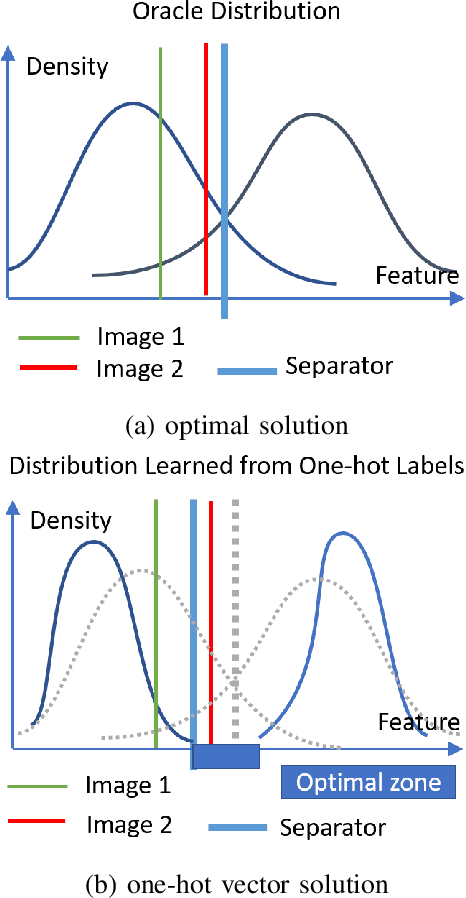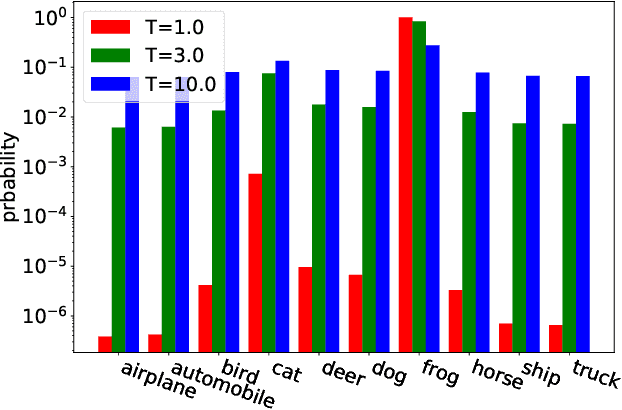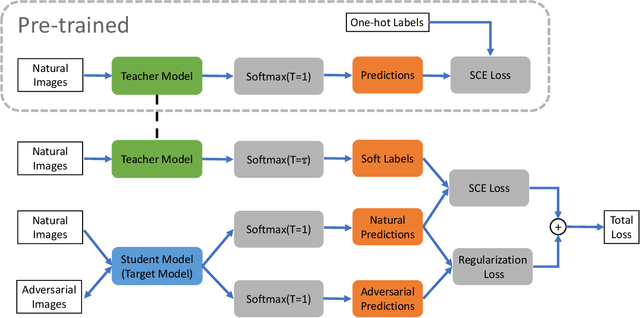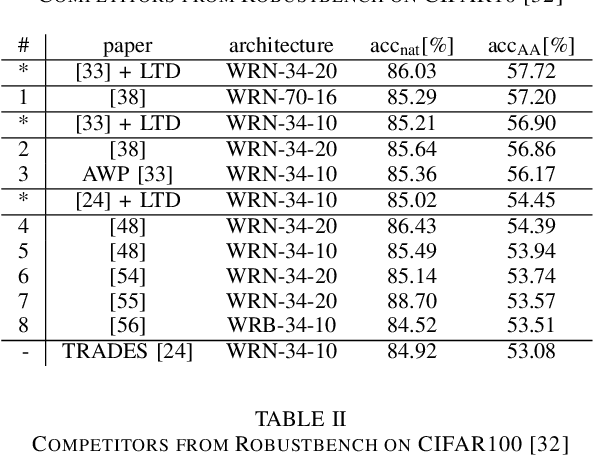Erh-Chung Chen
Data-Driven Lipschitz Continuity: A Cost-Effective Approach to Improve Adversarial Robustness
Jun 28, 2024Abstract:The security and robustness of deep neural networks (DNNs) have become increasingly concerning. This paper aims to provide both a theoretical foundation and a practical solution to ensure the reliability of DNNs. We explore the concept of Lipschitz continuity to certify the robustness of DNNs against adversarial attacks, which aim to mislead the network with adding imperceptible perturbations into inputs. We propose a novel algorithm that remaps the input domain into a constrained range, reducing the Lipschitz constant and potentially enhancing robustness. Unlike existing adversarially trained models, where robustness is enhanced by introducing additional examples from other datasets or generative models, our method is almost cost-free as it can be integrated with existing models without requiring re-training. Experimental results demonstrate the generalizability of our method, as it can be combined with various models and achieve enhancements in robustness. Furthermore, our method achieves the best robust accuracy for CIFAR10, CIFAR100, and ImageNet datasets on the RobustBench leaderboard.
Steal Now and Attack Later: Evaluating Robustness of Object Detection against Black-box Adversarial Attacks
Apr 24, 2024Abstract:Latency attacks against object detection represent a variant of adversarial attacks that aim to inflate the inference time by generating additional ghost objects in a target image. However, generating ghost objects in the black-box scenario remains a challenge since information about these unqualified objects remains opaque. In this study, we demonstrate the feasibility of generating ghost objects in adversarial examples by extending the concept of "steal now, decrypt later" attacks. These adversarial examples, once produced, can be employed to exploit potential vulnerabilities in the AI service, giving rise to significant security concerns. The experimental results demonstrate that the proposed attack achieves successful attacks across various commonly used models and Google Vision API without any prior knowledge about the target model. Additionally, the average cost of each attack is less than \$ 1 dollars, posing a significant threat to AI security.
Overload: Latency Attacks on Object Detection for Edge Devices
Apr 12, 2023Abstract:Nowadays, the deployment of deep learning based applications on edge devices is an essential task owing to the increasing demands on intelligent services. However, the limited computing resources on edge nodes make the models vulnerable to attacks, such that the predictions made by models are unreliable. In this paper, we investigate latency attacks on deep learning applications. Unlike common adversarial attacks for misclassification, the goal of latency attacks is to increase the inference time, which may stop applications from responding to the requests within a reasonable time. This kind of attack is ubiquitous for various applications, and we use object detection to demonstrate how such kind of attacks work. We also design a framework named Overload to generate latency attacks at scale. Our method is based on a newly formulated optimization problem and a novel technique, called spatial attention, to increase the inference time of object detection. We have conducted experiments using YOLOv5 models on Nvidia NX. The experimental results show that with latency attacks, the inference time of a single image can be increased ten times longer in reference to the normal setting. Moreover, comparing to existing methods, our attacking method is simpler and more effective.
LTD: Low Temperature Distillation for Robust Adversarial Training
Nov 03, 2021



Abstract:Adversarial training has been widely used to enhance the robustness of the neural network models against adversarial attacks. However, there still a notable gap between the nature accuracy and the robust accuracy. We found one of the reasons is the commonly used labels, one-hot vectors, hinder the learning process for image recognition. In this paper, we proposed a method, called Low Temperature Distillation (LTD), which is based on the knowledge distillation framework to generate the desired soft labels. Unlike the previous work, LTD uses relatively low temperature in the teacher model, and employs different, but fixed, temperatures for the teacher model and the student model. Moreover, we have investigated the methods to synergize the use of nature data and adversarial ones in LTD. Experimental results show that without extra unlabeled data, the proposed method combined with the previous work can achieve 57.72\% and 30.36\% robust accuracy on CIFAR-10 and CIFAR-100 dataset respectively, which is about 1.21\% improvement of the state-of-the-art methods in average.
 Add to Chrome
Add to Chrome Add to Firefox
Add to Firefox Add to Edge
Add to Edge